#Southern Rock Opera
Explore tagged Tumblr posts
Text
Operetta moodboard for The Monster High characters series pt. 14
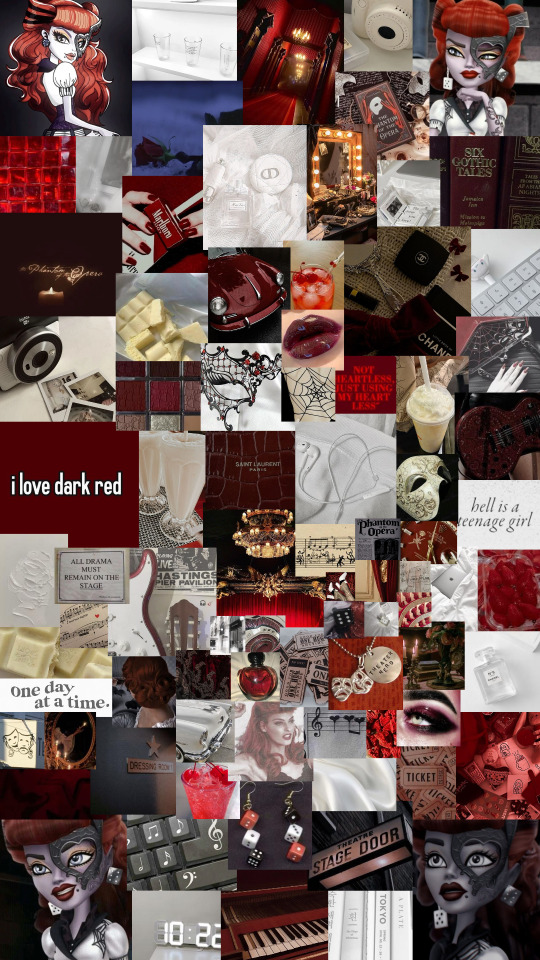
10 notes
·
View notes
Text
Transitus Should Be Set In New England (Northeastern United States) - A List
By: A Midwestern American
It’s on my to-do list to spruce up the album’s wikipedia page and I’ll probably ask Arjen about location directly at some point for it. But for now, for fanfiction’s sake:
It is never explicitly stated where in the world the real-world portion of Transitus takes place. You can glean from basic context that it’s somewhere in the Global West but no real locations are stated by the lyrics, narration or liner notes.
I think the default is to assume it’s set in Great Britain, which is totally reasonable. Daniel’s family is consistently referred to as a “house,” hinting at noble status. The plot and setting are heavily inspired by that of Downton Abbey, right down to the uptown girl character dying horrifically and their racially discriminated servant spouse having a five-alarm crisis about it after the two were cut off financially from the uptown girl’s family.
That’s how I initially thought of it. Easy (not really), inconsequential Victorian setting.
But now, after a lot of research and writing and just sitting around and thinking about it, I have an alternate suggestion.
I think the story fits and would actually be more effective if it were set in New England, aka the farthest Northeast region of the United States. Specifically Connecticut but that’s not as relevant as it taking place in this region/country overall. I’ll go through the major arguments for this one by one, getting more plot-relevant as they go. Hopefully, given historical context and narrative themes, you’ll see my point here.
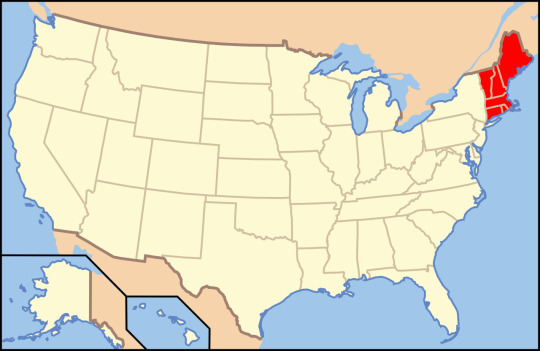
New England highlighted on a map of the U.S., comprising the states of Maine, Vermont, New Hampshire, Massachusetts, Connecticut and Rhode Island. The entire west side of the region borders New York State.
Enjoy. 🔥🇺🇸
1. Nationalities of Main Cast
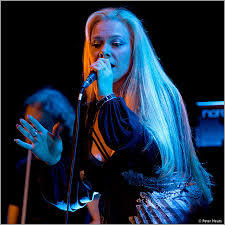
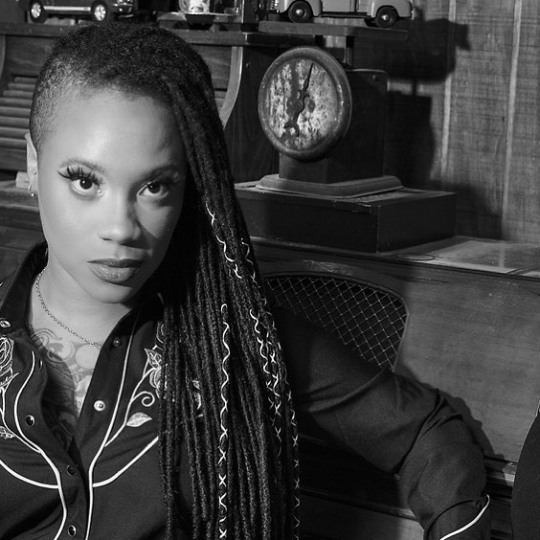
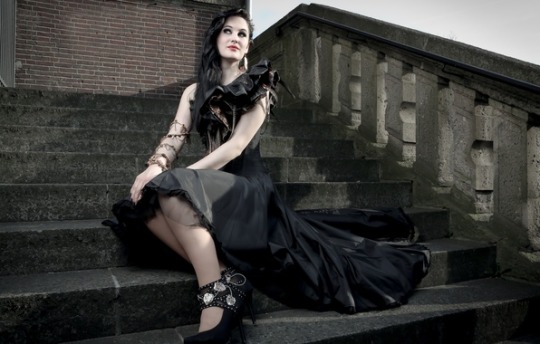
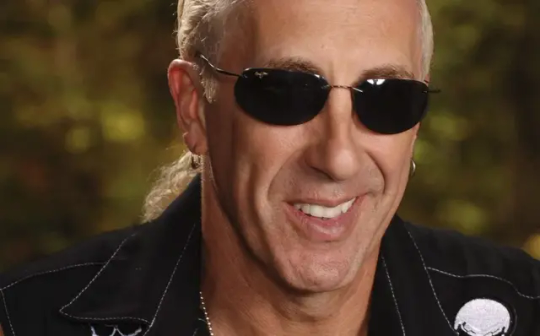
The weakest point, but worth mentioning. Three of the six human characters in Transitus, a majority and the most of any Ayreon album, are played by American singers: Amanda Somerville, Cammie Beverly, and Dee Snider. Dee Snider being the most notable because his character is this staunch, traditionalist patriarch guy who’s on Daniel’s back about the Old Ways, and from there I think it’s safe to assume this guy’s family has been in the spot they’re in for more than a few generations.
I personally really like integrating certain non-personality-related traits from irl singers into their characters, and I think nationality applies to that nicely in this context. 19th century New England aristocrats were usually one of two categories: generationally wealthy European wannabes that take an insane amount of pride in their colonial ancestry, or “self-made” business tycoons that made ungodly amounts of money during the Second Industrial Revolution.
More on that second category in a second, but given the very, very limited information we get on Dee’s character, he gives me more of that high-and-mighty old money vibe.
Also, with almost zero canon evidence: I am completely glued to the idea that The Soprano, played by a very Dutch Dianne van Giersbergen, is the ghost of Daniel and Henry’s mother. Like I will die on this hill. Coincidentally, Connecticut, a state I picked from New England almost entirely at random, was first colonized by Dutch settlers, setting it apart from a few other Northeast states. If we’re keeping with the Nationality of the Parent Characters Carrying Through From Real Life theme, then that would create a very strong tie between Daniel’s family and their home state, further emphasizing the father's prioritizing of retaining status and “proper breeding.”
2. Weirdly Specific Combo of Architectural Styles
I genuinely cannot think of any other place where these three buildings could possibly exist in close proximity to each other, like-
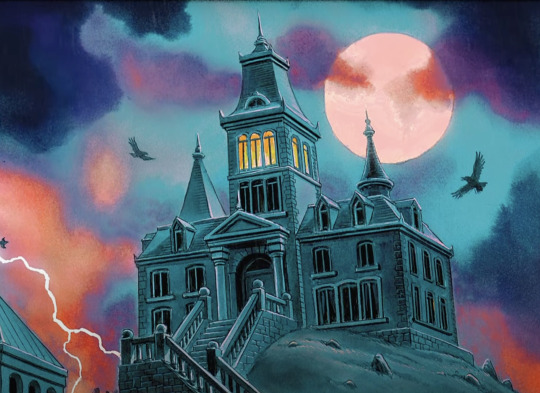
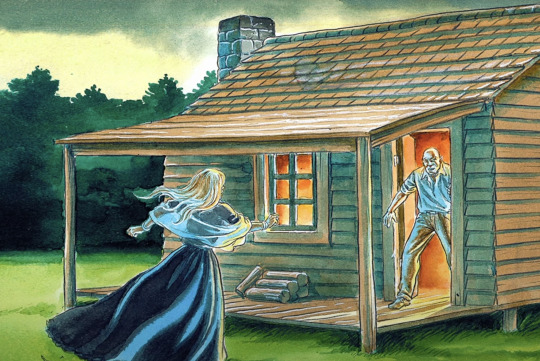
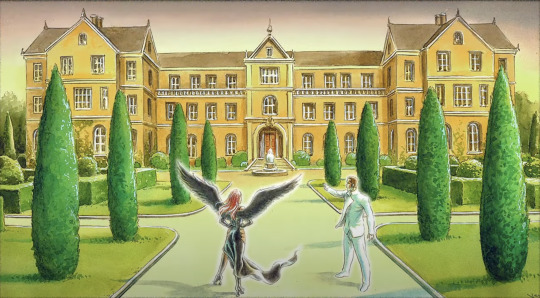
Daniel’s family’s house (bottom right) is by far the strongest visual argument you can make for Transitus being set in Britain, like that is an 18th century English manor house through and through. Fair enough, but:
The East Coast US is a bunch of former colonies that were under British rule in the Georgian period (1714-1837), hence the name “New England.” A lot of the architecture from that time is reflective of this, especially in the older Northern colonies. Southern ones tend to follow the Greek Revival/Neoclassical styles more.
I’d believe the Britain argument here if it wasn’t for the other two houses’ whole situation. Too much US-adjacent design present in this specific region for you to go “yea but the mansion, though” at the mansion that could also exist in said specific region.
As much as I don’t like this as a design choice in the comic: Abby’s parent’s house (bottom left) is a frontier log cabin. These became very, very common during Westward expansion, fueled by the Homestead Act in 1862, the Manifest Destiny Doctrine present throughout the 19th century, the California Gold Rush in 1848, etc… The style wasn’t exclusive to the West though, and a bunch are still standing in the rural East Coast.
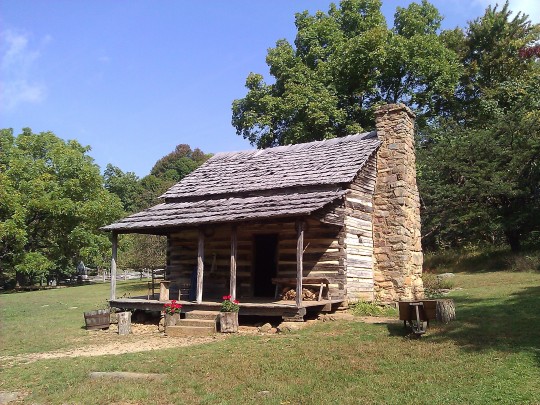
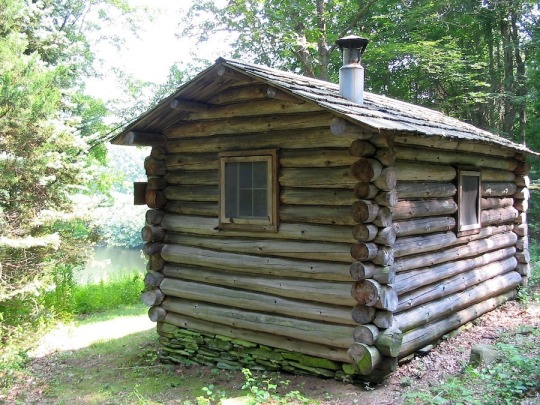
Cabins in Blue Ridge, Virginia and Hampton, Connecticut, respectively
As I said, I think it’s just a very odd choice. Among other reasons, the only part of this house that’s plot-essential is that it has a set of stairs for Lavinia to snap her neck on, and these things are pretty much always single floor structures.
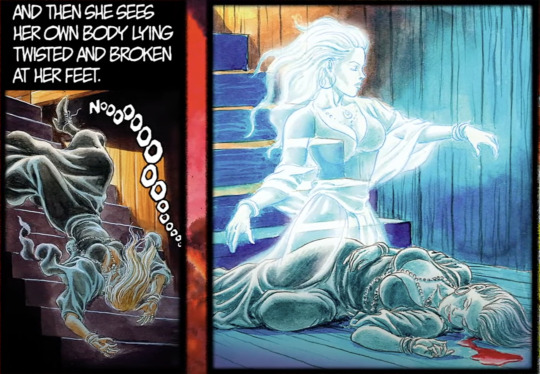
Girl, where do those even lead to???
I dunno. I just don't like it, even if it supports my point. It should have been a little two-story rowhouse. Moving on.
These houses existed outside the US. It’s a plain, utilitarian style that shows up all over the place in Europe, even if they’re more synonymous and symbolic to America.
The main house, though, Daniel and Abby’s, narrows it down a bit more. It really reminds me of the Second Empire style, popular in the Northeast and Midwest regions at the time.
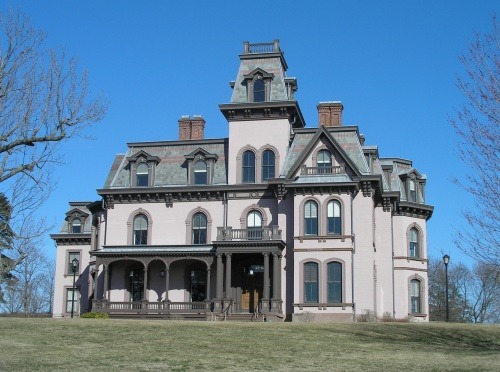
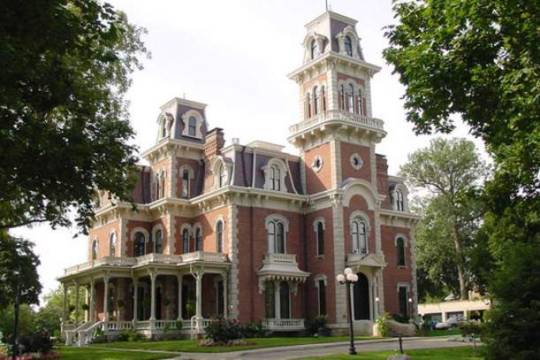
The John M. Davies house (Connecticut) and Terrace Hill (Iowa), both built in the mid-late 1860s.
Blocky base, mansard roof, giant statement piece (i.e. a tower) tacked on there somewhere.
The only issue with that guess is that it would make the house, at best, 25-30 years old. Second Empire was only a thing in the post-Civil War period, and the house is meant to be this ancient, haunted thing.
I had this idea for working around it a few months ago that it’s like…an older style that’s been updated in recent years? Say it’s originally a colonial era home (also plausible for New England) belonging to Daniel’s family. Makes sense, the base is still symmetrical and flat with two stories, steep roof, all that jazz.
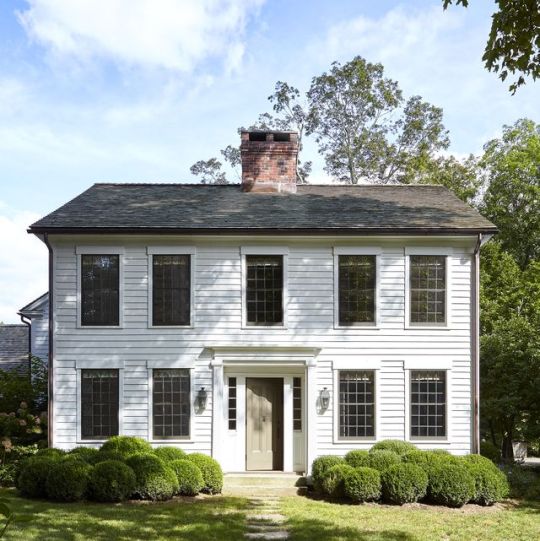
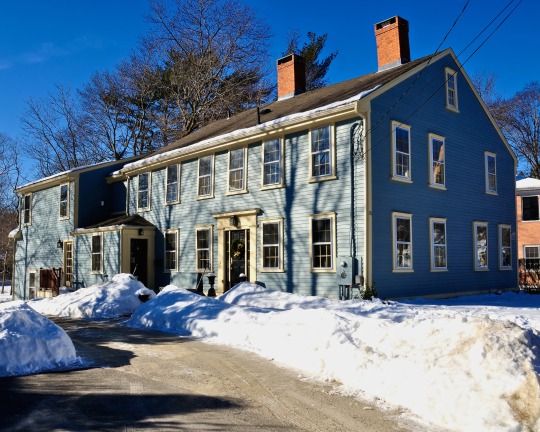
Washington, Connecticut (ca. 1750) and Hingham, Massachusetts (1721)
They clearly don’t use it themselves so maybe they rent it out? Maybe that’s part of where their money comes from; tenant properties and such. Maybe, understandably, nobody wants to pay to live in it because it’s old and run down and has a cemetery for a front yard, so they gut it and renovate, slapping some new age architecture over the top to make it more appealing.
It doesn’t work but the house finds a use eventually. It’s still old as hell, still American, plus you get the bonus representations of traditionalist vs progressive styles being combined, like the two people that live there.
...get it
Anyways, again: these all exist within sprinting distance of each other. I’d love some other suggestions but the Northeast is the only spot I know all three of them can comfortably exist in.
3. Historical Implications - The American Civil War (1861-1865)
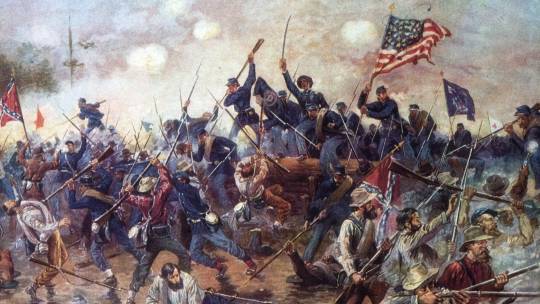
In January I finished this sort of…show bible for any and all Transitus HCs I had as an alternative to sending someone like 300 maxxed out rant-y text messages about it. Congratulations to @ay-miphae for somehow reading all of it.
Since it’s important to certain story elements, a section of the text is dedicated to a consolidated explanation of the American Civil War.
Kindly, a PDF of that section:
It’s deliberately written so someone with no prior knowledge of US history can follow it. That said, even if you are American and have the general gist of the war, I still think you should read it so you can really get where I’m coming from. It’s not something to be incorporated into a story lightly.
If you're not up for it, I at least think the intro paragraph speaks for itself in relation to my point:
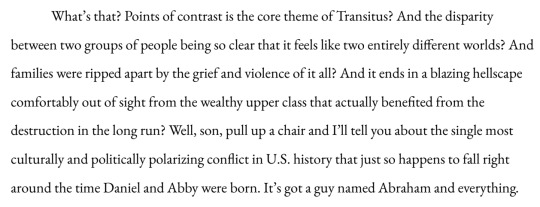
The war ended about 20 years before the album takes place and you’d be hard pressed to say it fits with its story’s themes, far beyond the surface level of its very real effect on American race relations (that were much more intense than those of England at the time):
The hypocrisy of the Union, as if the majority of the North wasn’t still segregated and racist as hell long after slavery was abolished.
The tension not just regarding race but socioeconomic class in the war years. Of particular interest was the fact that wealthy men could pay their way out of conscription, often viewing the war as a mere inconvenience rather than the system-altering mess that it was for everyone else.
Death. Just completely unprecedented amounts of it and unnecessarily so.
Your pick of the million and one ways it could have affected Daniel and Abby’s parents, and even Henry depending on how old you picture him.
Et cetera. You want a way to push the “Two Worlds” motif? Set the story in a Northern state two decades after a war fought over whether millions of people got to be treated like human beings or not, so impactful that the two sides of it are still so clearly, ridiculously discernible and will stay this way for another century and a half after.
As far as the possibility of setting Transitus in the South goes, fascinating as that could be, the plot of Act II makes it impossible. Interracial marriage was either void or outright criminalized in every single Southern state, until the ruling of Loving v. Virginia deemed the policies unconstitutional in 1967. There is no room for conflict over Abby receiving inheritance money - she and Daniel would have been straight-up arrested once Henry found out about them.
In the North, laws like this were repealed during or before the 1880s, if a state had them at all. In Connecticut’s case there were no laws ever prohibiting interracial marriage, but starting in the 1840s you were required to disclose your race in order to obtain a marriage license, which could create its own conflict with the risk of Daniel and Abby being exposed. Regardless of legal allowance, the practice was heavily frowned upon wherever you went, and the majority of them are recorded as being ordained in black churches, since white ones would turn them away and be well within their rights to.
A helpful reminder. 🔗
4. Main Setting - The American Gilded Age (1877-1900)
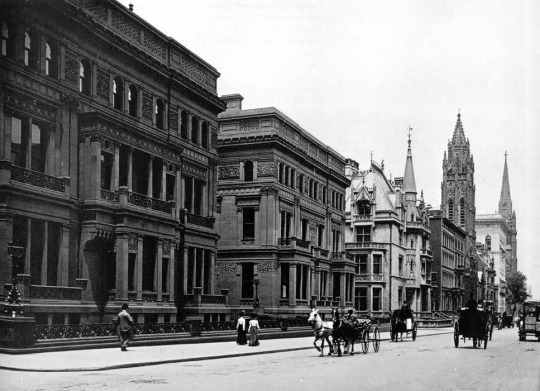
This was the point in my amateur "research" for this setting that I completely dug my heels in.
I mentioned the two sides of the 19th Century New England aristocracy - The dynastic, nobility-adjacent old money crowd, and the new money industrialists that rose to power during and after the Civil War.
Hey look, another (shorter) helpful PDF summary of a historical period:
Emphasis on "the wealthy elite using underhanded, exploitative practices to get what they want with no real consequences for it."
Henry fits...so perfectly into the category of these "robber barons" for me. Even if he's from a traditional, generationally wealthy family, he seems like enough of a greedy little cheat that he would force his way into this new crowd even if he didn't need to. It adds a few extra layers to a fairly archetypal 19th-century douchebag.
Henry being one of these Gilded Age industrialists sets him up as his family's main provider, allowing him to exert even more control over Daniel's life. Old money families had a severe distaste for these people, matching with Henry's extreme desperation to uphold his status. Even outside of higher social circles, these guys were hated by the general public and that was a 100% valid opinion. If Henry is this much more elevated above other characters in terms of wealth and the way he amassed it, it might make the insane jump from "jealous, nosy prick" to "murders an entire lower-class family for personal profit" a little more believable.
And, the most obvious point, the whole idea of this era, that "cartoonishly evil class divide" supporting the Two Worlds narrative.
The difference between Daniel and Abby's situations made all the more drastic, given that Henry may very well be one of (if not the) wealthiest men in the world in this prospective version of the story.
The nature of their wealth puts Henry, and by proximity Daniel, far more in the public eye than any British aristocrat would be. Daniel feels even more pressured and uncertain about his choices, even outside his family's expectations of him. Henry isn't just threatened by monetary loss after Daniel's death but cutthroat social humiliation, given who Daniel's inheritance is being released to.
Daniel is divided even further between his father's quiet, "safe" traditionalist lifestyle and his brother's much more forthright and totalitarian approach to everything. Maybe even tension created between Henry and his father for it.
Again, the stark difference between the post-War North and South, not exactly plot relevant but present in the setting.
The fact that the prosperity of Daniel's family is much more directly a result of the suppression of the poor and working class, the very difficult-to-navigate, set-in-stone power dynamic it creates in Daniel and Abby's relationship and how they come to terms with it.
And a little more on the Making-Shit-Up side: I have a troubling amount of extra characters I've used to fill plot holes that bother me, most of them servants, and trust me. The whole mass immigration aspect of this period makes character-building way more exciting. This is when the US Melting Pot idea really started, and it allows for a lot of different types of people to believably exist in a relatively limited setting. Christ, I even kept Abraham as an Englishman like his respective singer and it still makes sense within the world.
It's just...perfect. Arjen really picked the absolute perfect decade to set this story in for the sake of a throwaway 2084 joke.
5. The American Dream and the Tragic Fantasy of the Middle Class
This one is purely thematic, related to a more general national ideal than any one era or location (though I think the Gilded Age's presence boosts its effect). Oversimplified to all hell:
America is a very individualist society. It was founded on the idea of personal freedom and making your own way in the world with minimal resistance (or support) from an executive power, say, the British Empire. If you work hard and persevere, you can carve out the life you want and enjoy it. On paper, anybody can be anything, free from the restrictions of a tyrannical government or lineage-obsessed nobles. It's the ideal system, that benefits everyone who really wants it to.
Except it's just...not.
This isn't some groundbreaking concept. The American Dream is hypocritical as fuck and most people have figured this out by now. Sure, you can be anything you want in this country, no mountain is too high. So long as you are white, male, Christian, able-bodied and minded, not an immigrant, etc., etc.
Surely it's equal. Surely there are no unfair headstarts for people born into wealth and privilege, just like in Britain, and surely they will not use that advantage to lord power over the less fortunate with minimal consequences because they *earned* it and the government has no right to take it away. And surely, the people who really did work independently for what they have are not in a far more precarious position, as just a little bad luck can send them spiraling with nothing to fall back on.
...
And now, a small summary:
Daniel and Abby come from complete opposite sides of the social ladder, but are able to look past those differences because they care about each other as people. They are ridiculed and ostracized but they persist in the name of the life they chose (bada bing bada boom direct album quote 💃), and after enough time (and some pure luck), they get the house and make it their own. A quiet and steady spot, a safe middle ground between their two worlds.
One bad day and all of it is gone. Literally burned to the ground, and with it the character that all but stood for prosperity, change for the better and genuine human kindness.
The situation is then made exponentially worse when Henry, rich white jackass incarnate, steps onto the scene and twists the horror of it all into something that will benefit him. Doing so, mind you, by stepping on the backs of some select members of the lower class and tricking one through false promises of a shared reward to turn against her own. He fiddles with and fuels that fire while all previously mentioned genuine-human-kindness character can do is watch, and only after death does he get his comeuppance for it.
I figured it all fit together pretty well.
#this is the absolute trashfire of class and racial purity that is 19th century America...#...could be the setting of a story exploring the absolute trashfire of class and racial purity...#I couldn't wait this has been in my head forever#I am reading into this album way too fuckin much but my god it is FUN#genuinely curious where yall think it takes place#I seriously need to email Arjen and ask him about it#I think it's also worth mentioning that Lavinia being a Southerner would be a really interesting way to explore that cultural divide#idk#prog rock#rock opera#concept album#dee snider#cammie beverly#paul manzi#tommy karevik#amanda somerville#dianne van giersbergen#arjen lucassen#essay#basically#progressive waves art#ayreon#transitus#writing
14 notes
·
View notes
Text
youtube
#just thinking about my alt country period#before we even called it americana!#this is such a great story song#i miss self aware southern gothic rock opera#music
1 note
·
View note
Text
modern varian hcs varian got pulled out of school because of being one of those troubled kids that they never could handle. also he kept giving everyone lice cuz he was one of those kids that let people borrow his goggles when they forgot/broke theirs he wears just regular farm clothes. overalls, work gloves, some banged up shoes, but he has like two emo band shirts he got from a thrift store (they were four sizes too big for him and he ended up having to patch most of the surface area but he still treasures them. in a s3 ish timeline he'd wear something more akin to dark academia. he got a scholarship at some fancy college so he barely wears his farm clothes anymore southern (maybe texan since jerjor is texan but really any state would do). gets really into studying religious texts for his church but he doesn't even believe in it, he just finds it interesting. he'd be the annoying kid in sunday school asking questions no one can answer and they kick him out to have TalksTM. he still ends up staying though cuz quirin goes, and he likes having that time with his dad
varian pretty much lives off of burger king unless quirin cooks. quirin's a pretty good cook considering. he can make cornbread and pancakes n shit (they never were quite as good as his mom's but he has to make do now) the saporian arc would just be him joining some unheard of gang or something i picture him as a 90s/2000s kid if anything. milennial varian >>> greasy hair. unwashed, smells like gasoline, dirt and half a can of axe (you'd think it'd get better once he went to college but no he's still disgusting just with a better wardrobe) (speaking of which, his room is a fucking biohazard) started a shitty band during a vague v7k era. he played electric guitar and sometimes did vocals for a punk/rock-ish vibe (maybe some bad scream vocals) (hugo did bass/whiny midwest emo vocals, yong did drums and nuru played piano (varian did too but he never was as good at it as her) and sometimes violin cuz she and varian both agreed they wanted classical elements in their music. nuru requested she try opera in one of the songs but hugo threatened to unstitch her whole closet if she did). they had seven concerts and quit cuz like four people came and two of those were raps and eugene
he also had a youtube channel that flopped just as hard. it started out with science facts filmed in 120p with audio that sounded like it was recorded with an electric fan, then random vent stuff (one of those videos blew up a fair amount and the comments showed him no mercy) and then he tried going back to science stuff for a few videos after his mandatory youtuber apology but ended up deleting the channel out of embarrassment he made some kandi back when he was around fourteen. he never got into it much but it's still there in a drawer and he breaks some out of the dust every few years he's adhd, probably autistic and is developing bpd traits like i hc him to have in canon but even in more modern times, he still never gets diagnosed with anything, he's just a problem child so he suffers through it his entire childhood until one day while he's in that gang someone offers him meth. he liked it for about two weeks but then thought "hey what if i took more this is great lol", accidentally overdosed and swore off of it for life. he still tries making homemade remedies but the only thing they ever accomplish is getting him high he had alcohol twice at a family reunion. tried buying some once he reached legal age but he had such a baby face that they all thought his ID was fake and declined him
when he was fourteen he wore a couple of his mom's old dresses a few times out of curiosity (they were too big for him but not by much) and got bullied out of them within the week at sixteen he starts wearing eyeliner idfc insomniac so he tried listening to asmr to fall asleep but he couldn't go more than thirty seconds without turning it off. sensory overload yeah but also he thought maybe he just couldn't sleep with noises on so he tried sleeping in silence and of course that didn't work. goes to bed around 5 am, wakes up at noon groggy and downing six cups of coffee to try and feel alive big fan of the lego movie and sonic. also spiderman but not as much
#tts#tangled the series#vat7k#varian and the seven kingdoms#varian tts#varian vat7k#last long rant i promise
21 notes
·
View notes
Text
@zay-does-things
Every episode of the GF AU in a nutshell:
Season 1
Tourist Trapped: Local woman gets transported into a sleepy town in Oregon, more news at 11
The Legend Of The Gobblewonker: Bonnie tries to bond with her new friends and they almost get murdered by a lake monster
Headhunters: Bonnie, Dipper and Mabel try to figure out how the wax got axed
The Hand That Rocks The Mabel: Local woman tries to fistfight fat Southern child
The Inconveniencing: Turns out breaking into a haunted convenience store isn't the best idea, who knew?
Dipper Vs. Manliness: Dipper tries to be "manly" while Bonnie thinks it's all a bunch of bs
Double Dipper: Dipper clones himself and Bonnie gets really confused
Irrational Treasure: Local woman and two kids spill some serious tea on the richest family in town
The Time Traveller's Pig: Dipper and Mabel screw around with time travel while Bonnie grows increasingly worried about them messing up the past
Fight Fighters: Dipper brings a video game character to life despite Bonnie's warnings
Little Dipper: Dipper wants to be taller, and discovers a magic height-altering crystal! Oh, and also Bonnie fights a weird alternate version of herself that came out of a cursed mirror
Summerween: A cryptid made of candy tries to eat people and Bonnie realizes she's basically a mom/older sister to the twins at this point
Boss Mabel: Mabel runs the Mystery Shack for three days, and chaos ensues
Bottomless Pit!: Undertale but not really
The Deep End: Mabel tries to get with a merman while Bonnie is the best wingwoman
Carpet Diem: Aw hell nah the goobers got Freaky Friday-ed
Boyz Crazy: Mabel gets her own pet boy band and Bonnie is concerned
The Land Before Swine: Everybody goes on an adventure underground to find Waddles and Bonnie fistfights a T-Rex or some shit
Dreamscaperers: Bonnie meets Bill Cipher and immediately dislikes him
Gideon Rises: Local woman punches child in the face
Season 2
Scary-oke: "GOD DAMMIT, DIPPER!"
Into The Bunker: basically The Thing but if it was rated TV-Y7
The Golf War: Bonnie punts a golf ball dude with the voice of Remy
Sock Opera: Dipper gets possessed and Bonnie is terrified
Soos And The Real Girl: Bonnie has seen enough haunted dating sims to know where this is going
Little Gift Shop Of Horrors: Bonnie is a supporting character in several tales designed to sell Stan's merchandise
Society Of The Blind Eye: "Okay, maaaaybe you guys shouldn't Fuck Around and Find Out with the memory-erasing gun. Just a suggestion."
Blendin's Game: Three goobers try to cheer up their friend on his birthday by fighting to the death in an interdimensional colosseum
The Love God: Bonnie is concerned while Mabel tries to literally drug two people
Northwest Mansion Mystery: The Scooby Gang try to solve a mystery and nearly everyone gets turned into wood and almost die
Not What He Seems: Bonnie watches family drama unfold
A Tale Of Two Stans: Bonnie finally gets to meet the man who wrote the journals
Dungeons, Dungeons And More Dungeons: The gang plays D&D with wizard Weird Al
The Stanchurian Candidate: Stan tries to become president and some morally questionable mind control is involved
The Last Mabelcorn: Bonnie and the girls beat the shit out of unicorns to get their hair as a Dorito Demon repellent
Roadside Attraction: Stan gets catfished by a spider woman and Bonnie has to rescue his dumb ass
Dipper And Mabel Vs. The Future: Bonnie witnesses family drama 2: growing up and the fear of it boogaloo
Weirdmageddon: Dipper and Bonnie try to survive the apocalypse
Escape From Reality: Bonnie and the gang try to free Mabel from her personalized prison
Take Back The Falls: Everything's pretty much the same, except Bonnie spits in the Bill statue's eye at the end as a final "fuck you" to him
#fnf#friday night funkin#just a regular fnf mod#funky fresh changes#exe oc#bonnie freeman#gravity falls#gravity falls au#crossover au#dipper pines#mason pines#mabel pines#stanley pines#stan pines#grunkle stan#stanford pines#ford pines#grunkle ford#mystery twins#pines twins#wendy corduroy#soos ramirez#waddles the pig#gideon gleeful#pacifica northwest#bill cipher
41 notes
·
View notes
Text
It actually makes complete sense for them to have given Operetta the theme/style of Rockabilly.
- The Phantom of the Opera is French, a French Story by a French Author
- A lot of places in the southern United States have French influence (a good part of this is thanks to Canada btw), especially New Orleans which is in the French parts of Louisiana
- New Orleans in particular, and by extension New Gorleans, has had a long history of Opera, dating back to at least 1790
- my memory is fuzzy but I believe the Phantom moved his family to New Gorleans either before Operetta was born, or when she was very young.
- Country music is what’s known for the south, particularly being popular in the south
- Rockabilly is a blend of Rock and Country music genres
- One of the best known show houses for Country Music is a hall called “The Grand Ole Opry”. It got this name because they derived it from Grand old Opera.
- Rockabilly gives her a unique style inspired by Americana 50’s fashion
So yeah, the Rockabilly influence makes complete sense for her character and Monster Parent. In fact there’s a lot of thought behind it. I’m not really sure why people question her influences in connection to The Phantom so much though when other characters also don’t reference their parents a super lot, or at all like Lagoona
#Monster High#Operetta#like despite Lagoona clearly being influenced by the creature of the black lagoon#pretty much all references to it were stripped away by the time she was finalized#but operetta seems to be the one people get hung up on with the parent connection#fun fact the phantom had an adaption as a universal movie#which means operetta is more in line with the original theme of children of universal monsters#which may explain why her trademark was one of the earliest
28 notes
·
View notes
Text
music yap sesh 1
i'm the worsttttt music nerd ever😭 worst meaning like how obnoxious i am about it. it is the number 1 thing i talk about non-stop. so mwahahahaha i'm aiming for a career in A&R, and part-time music production and mastering. so here's just me yapping multiple times for no reason🩶😛
march 11, '25 - songs y'all need to start bumping IMMEDIATELY!!!!
may you never forget me - temachii
my my - chenayder @chenayder
safe house - nectar woode
something blue - sarika
beautiful boy - esha tawari
on my body - crae wolf
bite size - sixsaidit
lovebites - lava la rue
black licorice - peach pit
cleaner air - yeek
everybody wants to love you - japanese breakfast
don't delete the kisses - wolf alice
it almost worked - tv girl @tvgirl
get with u - clairo
strawberry letter 23 - shuggie otis
two weeks - grizzly bear
heybb! - binki
pookie's requiem - sailorr
crack rock - frank ocean
april 22, '25 - the most dykey songs to ever dyke (some not *necessarily* sapphic but idc)
most wanted man by lucy dacus @lucydacus (yippee! i got to see lucy live on sat. night :3)
sugar in the tank by julien baker and torres
be my own boyfriend by olivia dean
green eyes by arlo parks @arloparks-blog (i have the most massive crush on arlo🙏🙏)
new flesh by current joys
jackie and wilson by hozier
son of a preacher man by dusty springfield
super massive black whole by muse (alice cullen...)
lethal lolita by red aunts
gunpowder & lead by miranda lambert (fem top revenge song)
worry with you by sleater-kinney @sleater-kinney
i like the way this is going by eels
rollerblades by dominic fike
mistakes by lake street dive (situationships💔💔💔💔)
drag king bar by bitch and animal
butcheress by rabbitology
christmas wrapping by the waitresses (only a lesbian would see their ex situationship and go hey let me spend xmas with you)
meet me in brooklyn by yaya bey
vanilla tobacco by eloise
animal enough by maya hawke
i'll be your woman by st. paul & the broken bones
give you the world by steve lacy
crimson and clover by the shacks
may 10, '25 - i went to a lucy dacus concert and left as a religious person
okay the title is somewhat of an exaggeration because i'm not *actually* religious but i felt closer to any cosmic power than i've ever felt there. i went to the may 9 lucy dacus concert in dallas and it sincerely blew my mind.
i'm not one to cry at movies, books, concerts, plays, etc. unless i'm extremely hormonal. usually it takes me a couple days to process and then i'll cry. however, when i went to that concert and sat in box M... i felt otherworldly.
i was crying like a baby through most of it. i felt like my heart was floating out of my body like those cartoon ghosts post-mortem. me and my best friend wiping each others tears cause the other was too distracted to notice. having silly conversations about elementary school memories in between sets. screaming my life away to night shift like a mega church attendee when they hear oceans by hillsong united. head and heart connected to each and every one in that big ass opera house.
i grew up in the southern baptist church, i moved to methodism, nowadays i'm agnostic of sorts. i never understood those people who sung louder than the choir at church and read bibles 24/7. now i understand it.
i did a presentation called sacred secular in my parents sunday school class a couple weeks ago and it was all about songs that feel holy and sacred and gospel-like but aren't church songs. rejoice by julien baker was the first song on my list. i feel like it really applies to my current state and this concert. screaming the lyrics to all of lucy's songs and airing my grievances without saying anything. embracing my queer joy, grieving my former loves, embracing my hormonal lesbian self, and tearing up over my issues with self-confidence. "i rejoice and complain" is relatable beyond belief. fuck man. i'm sobbing now.
#music#music nerd#yapping#infodump#song recs#need to know#recommendations#lucy dacus#julien baker#arlo parks#tv girl#steve lacy#maya hawke#sleater kinney#frank ocean#clairo#japanese breakfast#indie#rock#folk#rnb#hiphop#pop
5 notes
·
View notes
Text
In 2014, a young man in South Bend, Indiana, attempted to write and record an original song in the style of Drive-By Truckers’s 2001 Southern Rock Opera poetic classic The Three Great Alabama Icons but as a homage to the political career of Louisiana Governor Huey “The Kingfish” Long. This event accumulated such a dense concentration of malevolent noosphere energy that he perished in an explosion so large, sudden, and violent that first responders could only postulate that it was the result of a freak gas accident, but given the young man’s confusing politics local newspapers briefly proposed it might have been the result of mishandling of illegally acquired explosive material.
28 notes
·
View notes
Text
7 Beautiful Spots in Australia to Visit
Australia — a country of amazing scenery, lively cities and fascinating wildlife. Whether adventure seeker, nature enthusiast, or casual wanderer, the country boasts countless stunning destinations begging to be explored. Australia is a big country, so, in this article, we bring you seven beautiful places to visit in Australia.

1. Great Barrier Reef, Queensland
The Great Barrier Reef is one of Australia's most beautiful and famous places to visit. The world’s largest coral reef system, this natural wonder extends more than 2,300 kilometers. Diverse marine life, from colorful fish to sea turtles to vibrant corals, call it home.
Visitors can see the reef by snorkeling or scuba diving, or by taking a glass-bottom boat tour. The incredibly clear waters of the reef make for some awe-inspiring underwater adventures. The Whitsunday Islands are also within the reef and they boast beautiful, white sandy beaches, great for sorting out that tan.
2. New South Wales Sydney Opera House and Harbour Bridge
Two of Australia’s most iconic features—the Sydney Opera House and Harbour Bridge—can be found in Sydney. These architectural wonders make Sydney among the most beautiful places to visit in Australia. The Opera House, known for its sail-like design, has world-class performance entertainment and the Harbour Bridge provides sweeping views of the city.
Harbour cruise, stroll around circular quay, climb the harbour bridge, etc. With its mix of cultural places and gorgeous waterfront environment, Sydney is, of course, a must-see as well!
3. Uluru, Northern Territory
Uluru, or Ayers Rock, is one of the most spiritual and beautiful places in Australia to visit. This colossal sandstone monolith looms in the center of the Outback and is sacred to the Anangu people, who are the traditional landowners.
The rock at Uluru is most spectacular at sunrise or sunset, when its color is brushed with light, and visitors flock to bask in its glow. Visitors can walk the base of Uluru on guided tours to learn about its cultural significance and Aboriginal rock art. Nearby Kata Tjuta (The Olgas) is another set of impressive red rocks.
4. The Twelve Apostles, Victoria
Twelve Apostles is one of Australia’s best natural sights, located on the Great Ocean Road. Towering limestone pillars stand proudly against the Southern Ocean in this stunning coastal spectacle.
The formations can be admired from viewing platforms, or seen from a bird’s-eye view when traversing through the canyons on a helicopter ride. The coastline around the area includes rugged cliffs, sandy beaches and natural rock arches. The extra stops on the Great Ocean Road route include these other incredible sites, such as Loch Ard Gorge and London Arch.
5. Cradle Mountain, Tasmania
For a lover of nature, Cradle Mountain is one of Australia's most scenic destinations. Situated in Tasmania’s Wilderness World Heritage Area, this location features stunning scenery, including rugged mountains, alpine lakes and ancient rain forests.
Cradle Mountain is best explored by hiking the trails that surround it, including the Dove Lake Circuit, which provides stunning views of the mountain’s reflection lining the lake. Wildlife lovers might also see wombats, wallabies and echidnas nearby. In the winter, the snow-covered landscape lends a little charm to the area.
6. Bondi Beach, New South Wales
While there’s no trip to the Land Down Under that’s complete without attending one of its world-known beaches, Bondi Beach is one of the most stunning locations in Australia to visit. If you are a beach person, this iconic beach is world famous for its golden sand, crystal blue waters, and colorful vibe.
Bondi Beach is ideal for swimming, surfing or just soaking up the sun. Another great option is the Bondi to Coogee coastal walk, which has beautiful views of the ocean and takes you to a few other gorgeous beaches and rock pools. Trendy cafes, restaurants and markets also dot the area, making it an active hangout for tourists.
7. Kangaroo Island, South AustraliaKangaroo Island, South Australia
Kangaroo Island is a wildlife lover’s paradise and one of the nicest places to visitAustralia. Off the coast of South Australia, the island is home to native wildlife, including kangaroos, koalas, sea lions and a variety of bird species.
Inside Flinders Chase National Park are the island's most famous natural rock formations: the Remarkable Rocks and Admirals Arch. On the other hand, visitors can discover unspoiled beaches, green forests and well-renowned farms with delicious honey and fresh fruits.
Conclusion
Australia is home to some of the most stunning places on Earth, from breathtaking coral reefs to iconic landmarks and stark natural wonders. This article mentions seven beautiful places to visit, all of which have unique characteristics that make them worth visiting for any traveler. From the wild to the wonderful, the beautiful and the bold, Australia has an epic experience in store for every kind of traveller. Well, then just plan note your travel and look for this amazing country!
2 notes
·
View notes
Text
Cowboy Carter Thoughts
Beyonce cannot be stopped! This album with its instrumentation and pacing allows for the natural beauty of her voice to shine and carry the lyrics.
Taking the "country" genre and twisting it in a that is very much her. No skips!
AMERIICAN REQUIEM: Beautiful choice to open the album. Setting the tone in proudly reclaiming her Southern/country roots.
BLACKBIIRD, a cover of the Beatles song brings the meaning behind the original to the fold. Amongst the deep seeded issue of racism in America, it ends on a hopeful note I love.
16 CARRIAGES, beautiful telling of essentially her life story having to be on the grind since a teen to achieve her dreams. The structure of certain sentences stay the same, but changes to a few words (i.e dreams to fears) show the persistence to go for what she wants and be there for her family
PROTECTOR. RUMI LITTLE BABYYYY 🥺🤏🏾
MY ROSE. No one is perfect and everyone has their flaws , but she's hoping you love yourself and I'm not sobbing, you are!
With JOLENE and DOLLY P, Dolly Parton really said, "Whack her. Get her again for me!" Beyonce took it on gladly. And we love to hear it.
DAUGHTER is terrifying in a subtly powerful way as her being someone to not mess with. Also, the way the Italian opera fit in was so smooth! Then the transition to SPAGHETTII is a powerful punch to that. Fun!
Initially surprised by Miley's appearance in II MOST WANTED, but their voices worked well together. And same with Post Malone in LEVII'S JEANS. Okay, y'all!
YA YA is a unique sound on it's own. Not country. Not rock. Not pop. It is its own thing to jive and have fun to. Obsessed.
RIIVERDANCE was enjoyable taking this Irish-style music and dance and making it her own for another audience.
SWEET ⭐️ HONEY ⭐️ BUCKIIN' Ope the shadeeee! I’m not familiar with Shaboozey, but I’m liking his sound and his contribution made the song bounce. Also the outro ate.
AMEN was a fitting conclusion to the album with "amen" also being the last word in Ameriican Requiem. Chef’s kiss.
Favs: RIIVERDANCE, YA YA, II HANDS II HEAVEN, MY ROSE, BLACKBIIRD, SPAGHETTII, LEVII'S JEANS, 16 CARRIAGES, SWEET ⭐️ HONEY ⭐️ BUCKIIN', AMEN, DESERT EAGLE, TYRANT
#I have too many favorites 😩#no particular order btw!#cowboy carter#beyonce#music#also Beyoncé will never fail to make it known she fucks hard 💀
11 notes
·
View notes
Text
Someday Delta Rae are finally gonna release the full album of their southern gothic gospel rock opera about a witch trial and kill me entirely dead, and I will thank them for it.
4 notes
·
View notes
Photo

Fred McDowell: The farmer who emerged from the woods and made a masterpiece
I thought it might be good for newbies to Mississippi Fred McDowell –like I was when I recorded “Live in New York”– to find out about where Fred came from, recording wise. This article in the UK webzine, Far Out, lays it out pretty well. You might want to dig deeper into folklorist Alan Lomax, but more importantly, you'll get a glimpse of the ambition that drove Fred from a Mississippi farm to his well deserved worldwide acclaim. -Fred Seibert.
By Tom Taylor @tomtaylorfo Far Out Magazine Sat 18 November 2023 22:00, UK
Some blues players can get their guitars to tell a story; Fred McDowell could get his to sing an opera akin to a southern Les Mis. “With Fred McDowell, I just love the way he articulates the notes,” fellow blues guitarist Bill Orcutt explains. “I’m hardly unique in that, but there’s just something about that that I love.” He’s not alone in that love either; everyone from Keith Richards to Bonnie Raitt have cited him as a star that they have attempted to emulate.
However, the one element nobody could ever copy was the humble backstory that brought him to the world. Long before he earned the prefix of Mississippi and became a big attraction at juke joints, got swamped backstage at folk festivals, or had his track covered by The Rolling Stones, he was just strumming away to an audience of nearby wildlife on his porch after a long day at work. Occasionally, he’d find himself in a situation where someone might toss him some loose change, but any notion of fame seemed unfamiliar.
But his skills were profound all the same, and fate would drag him towards another American numen on his travels. Alan Lomax was a roving ethnomusicologist, which is a big word for a curious fellow with a portable recording device that could capture the nation’s true folk on the move. One day, during Lomax and Shirley Collins’ great Southern Journey expedition, they rocked up in Como, Mississippi. They were intent on capturing the music at a local dance and the Young brothers’ fife and drum ensemble.
It was 1959, and McDowell was a 54-year-old wondering what his legacy would be beyond the farm he kept. So, without much fanfare and no warning, he decided to pick up his guitar, weave his way through the local woods, and rock up at Lonnie Young’s porch, where the recording was said to be taking place. Lomax and Collins lent him their ears, hit record, and old McDowell began to play.
Half a century later, if you close your eyes while listening to the masterpiece now known as The Alan Lomax Recordings, you can almost see the overalled maestro on the creaking porch ahead of you, hear the rustle of the southern breeze through the lowering tupelo trees, and smell the dancehalls buffer in the air. Of course, some of that is due to the suggestion of the cover art on the Mississippi Records pressing, but what I’m trying to convey is the dogeared sincerity that renders this authentic tape so beguiling.
Even at the time, Lomax and Collins were so flummoxed by the humility and skill of this unknown farmer that they quickly whisked their tapes off to a blues label, and in his autumn years, McDowell became an internationally renowned star, typifying what was best about the blues when the revival movement had somewhat muddied the waters — he was the new (old) find that the kids were craving.
He would soon rub shoulders with the next generation, teaching Raitt how to play slide guitar, touring with the likes of Big Mama Thornton and John Lee Hooker, and embracing the flattery of being covered by rockers despite declaring himself that he did not play rock ‘n’ roll. He left the farm behind and enjoyed a good 13 years of fame until his death in 1972, aged 68, but his old porch was never truly that far from his artistic thoughts, so even beyond the masterful Lomax Recordings, he’s the bluesman who can capture the earthiness of the South with more verity than anyone.
12 notes
·
View notes
Text
SONG RECS!!
For all of y'all TDH fans looking for more music. While ofc there's no other artist quite like them, I do have a compilation of others that remind me of them in some way.
Idk anything about music, so this is just a dump for my personal thoughts and not actual reviews. I tried to focus mainly on smaller artists here ^^
Adjy
I love Adjy so much. Please go listen to The Idyll Opus, especially if you're reading this in the summertime. It's such a rich, ambitious album with so many layers to unpack and it never fails to make me tear up a bit. It's so beautiful and melancholy and it perfectly encapsulates the feeling of summer.
Black Dime Cabaret
Another criminally underrated artist, Black Dime Cabaret is absolutely worth checking out. If you're into rock operas, this is your jam. My personal favorite of theirs is The Man Without Morality. I'm also really obsessed with Knock Knock right now. Such a fun and unique sound (and a cool story, too!)
The Republic of Wolves
Their music really messes me up. But in a good way. I don't know what else to say other than that you should definitely go listen to them because damn. I LOVE their work and if you like Shrine please go check out the rest!
Dispirited Spirits
Lush and a bit surreal? Not quite sure how to describe Dispirited Spirits but their music is definitely an experience. It sounds like outer space and it's very fluid and extremely cool. I'll leave it at that. Former Living Things might be my favorite from them.
Pete Davis
This one's very folk and a capella, but I do really love Hapax Legomena and I hope anyone who reads this post does too. A short album (just 12 1-minute long songs!) but it crams in a lot of emotion and cool sounds. I'm obsessed with Before The First Shelves Fell especially.
Southern Empire
I haven't listened to this one as much as the others, but I really love their style and I've been enjoying this album a lot lately. Would definitely recommend Another World to any Antimai fans out there.
The Morgana Phase
Science fiction albums my beloved. Awesome albums, awesome sound. Delightfully surreal and immersive. 10/10. No complaints. I love The Morgana Phase. They deserve so much more love.
#I might make a part 2 to this because I have so many more#yeah sure ill tag this with everybody#the morgana phase#pete davis#southern empire#dispirited spirits#adjy#the republic of wolves#black dime cabaret#song recs#the dear hunter#tdh#casey crescenzo#long post#Spotify#ani rambles
4 notes
·
View notes
Text
genuinely surprised tyler childers hasnt blown up on tumblr in all the years he's been making music. like im sure he has in some parts but the dude makes some sapphic ass music. hell his biggest video on youtube "In Your Love" is about two gay men in Appalachia and is effectively a protest song about lgbt rights, the rights of miners, and the predatory nature of the coal industry and what it does to the people it consumes. his earlier albums about drug abuse depression and what it means to love someone are nuts.
like cmon yall stop sleeping on this man he's been around for at least a decade and some change what are yall doing
also go listen to drive by truckers. Decoration Day is a monster of an album and so is Southern Rock Opera
#also jason isbell and drive by truckers#especially drive by truckers.#THE RIGHTS OF MINORS HOLY FUCK LMAO#MINERS MINERS MINERS#IT'S ABOUT COAL COUNTRY#what a typo
5 notes
·
View notes
Text
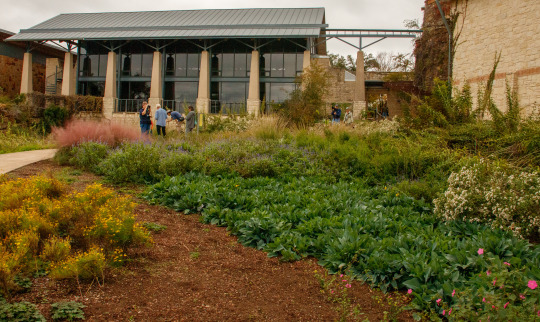
”Insects All Around Us” by Digital Edital Editor Kit O'Connell, originally published in the January/February 2024 issue of Texas Observer magazine:
Photography and additional reporting by Fall 2023 Reporting Fellow Paula Levihn-Coon.
The prey is already dying when the hunters arrive.
The sky is dark gray, the air thick with the threat of rain. But that hasn’t stopped over a dozen from gathering. They’re mostly, but not exclusively, older folks—frequently retirees with the ability to take a weekday morning off—and they’re armed with Digital SLR cameras and macro lenses.
Valerie Bugh crouches down over the squirming spots on the stone of the shady courtyard entrance to the Lady Bird Johnson Wildflower Center, prodding at the poisoned insects. Bugh, a gray-haired local naturalist, isn’t responsible for the state of these southern yellowjackets (Vespula squamosa), but she’ll take advantage of it for a photo opportunity. Someone on staff at the center discovered their nest and sprayed them just before the bug hunters arrived, and the entire hive is trickling out from their hidden home in a low rock wall. Bugh warns me to keep my distance from the females, who have fatter-looking bodies with stingers compared to the longer, thinner males, which normally only leave the nest for mating purposes. As I take a step back, she fearlessly kneels by their wriggling bodies, picking the males up and focusing her camera on each in turn.
“I’m trying to find one that doesn’t look dead,” she said. Soon, she’d even manage to document the hive’s queen as it haplessly tried to flee the toxins—a rare catch, though a grim beginning for a weekly ritual that largely focuses on the living.

Katherine Daniels and David Cook, volunteers, take insect photos.
Bugh is the author of 10 short fold-out pamphlets with color photos, with titles like Spiders of Texas: A Guide to Common and Notable Species and Unusual Insects of Texas: Caddisflies, Mantides, Lacewings, Walking Sticks, & More. That’s just one of her jobs: She’s also second clarinet in the Austin Opera. She’s modest about these accomplishments when asked—Bugh is too busy searching for bugs to brag about herself.
Every Thursday morning from February through mid-December, Bugh and her team of volunteers in the Lady Bird Johnson Wildflower Center Fauna Project explore a winding path, gradually aiming to cover the entire grounds over the course of a year, in order to inspect more than 650 species of native plants in the gardens and the 50-plus species of oaks in the Texas Arboretum for their occupants.
With this diversity of native plants comes a diversity in insect population too. Allowing for a few pandemic-imposed breaks and schedule changes, Bugh has otherwise been doing this consistently since 2010, during which time she’s identified almost 3,000 species of insect including over 50 bees, 345 flies, and over 500 different beetles. It’s not unusual to find a new species to add to the garden’s known tiny inhabitant list every week.
As Bugh gets moving, other bug hunters follow her in a pack. One by one and in pairs they break off from documenting spiders and beetles found clinging to the brick walls around the entrance and offices of the center. A few volunteer birders are also on-site, but for the most part, they work independently and seem invisible compared to the cheerful, chattering bug hunters. The group also documents signs of larger animals, from mammals to amphibians, but their main focus is on these tiny crawling creatures, since bugs are the most plentiful fauna present both in this garden and worldwide.

Every Thursday from 2010 to the present, Valerie Bugh leads the Fauna Project at the Lady Bird Johnson Wildflower Center in Austin, Texas.
The bug hunters move in a little cluster, calling out when they find something new for Bugh to examine. The salt marsh moth (Estigmene acrea) caterpillars are everywhere.
“If it’s a salt marsh, I don’t want to know about it,” declares Bugh dismissively, though with good humor. Their hairy bodies remind me of an asp, the caterpillar with a nasty sting. But they’re actually harmless to the touch. Bugh is just frustrated because there are too many of them. Unlike other caterpillars, the salt marsh moths will eat almost any plant, building its hairy cocoons all over.
“Every single plant is their host,” Bugh said.
By contrast, the Gulf fritillary (Agraulis vanillae), another caterpillar present in the day’s fauna count, subsists almost entirely on passion flower vines.
Bugh’s disdain for the salt marsh moth doesn’t stop her from plucking one from the greenery and posing for a photo with it. She’s happy to show off and talk about her fauna friends, even the overly common ones. As she moves around, her tone becomes more of a graduate lecture in entomology, no doubt similar to the insect walks she sometimes leads around Austin. Her volunteers are here to hone their skills at macro photography, to learn from a preeminent local expert, and to expand their naturalist knowledge. Many are members of the Texas Master Naturalist program.
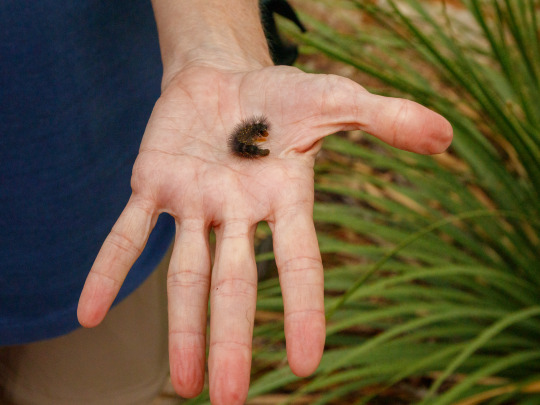
Valerie Bugh holds a salt marsh moth caterpillar (Estigmene acrea) in her hand.
But it’s a social occasion as much as anything, and the bug hunters talk among themselves around me, catching up on their lives. Two have just returned from African vacations and are excited to dish about all the great wildlife photos they got there, documenting large predatory wild beasts. But they seem just as eager to capture the living world’s small inhabitants in their lenses, too.
“It’s an insect safari,” said volunteer Katherine Baker, who told me she relished the challenge of macro photography after over a decade of experience in more general nature photography. She’s been helping count the fauna for about four years now, and always feels among kindred spirits here. But they all orbit around Valerie, returning to her for advice or an ID after wandering off.

Every Thursday for 13 years, naturalist and author Valerie Bugh, far left, has led volunteers in counting and photographing animals at the wildflower center.
“Her knowledge surpasses everyone … she’s just amazing,” Baker said of Bugh.
The gray morning clouds are starting to burn off. As it warms up, the butterflies and others will begin to emerge from the foliage where they’re resting during the rainy, humid part of the day.
“Aha, here’s where the bumblebees are,” Bugh declares with delight as some are pointed out to her. “These are workers and look how docile they are, they’re barely moving.”
Even before the sun appears, I become aware of how the plants around us are full of life, more than first appears to the untuned eye. As I start looking at one insect, like the predatory leafhopper assassin bug (Zelus renardii), a leggy, long-bodied, hungry thing with a venomous proboscis, I spot another, smaller bug crawling along the same bit of wild grass. We allow ourselves to forget in our day-to-day lives, but insects are all over, constantly surrounding and outnumbering us.

Valerie Bugh shines a small LED light on an insect.
On the day we visited, the team spotted seven different kinds of grasshoppers, two types of katydids and one cricket. Hunters often spot the American bumblebee, Bombus pensylvanicus, which is thriving in Central Texas even as its numbers dwindle elsewhere. But lately, its Sonoran cousin (Bombus sonorus) has been showing up more and more in the bug counts.
“That doesn’t bode well for desertification,” Bugh told me. “We’ve had a lot of Western species moving in, birds too, which means the habitat is great for them and a little drier than we’re used to for everyone else.”
The naturalist bug hunters are strongly aware of the harm climate change has brought on our region, and there’s a bittersweet feeling to parts of the morning, a subtle sense that someday soon could be the last day one of these fauna appear in a count.

“The ecosystems are moving east, including tornado alley. It’s not great for the people in the way, and not great for us on the edge of deserts. Think of Austin without any trees. I really like trees,” Bugh says wistfully.
But most insects still spark joy when she spots them. As sure as falling leaves, the appearance of the scorpion flies (which are neither scorpions nor flies) represents the start of true Texas autumn, and they were just putting in their first appearances that Thursday in November.

Bugh can identify a great number of creatures on sight, but sometimes enlists help from collaborative internet forums and apps, or even, in one case, a book of Central American insects published in 1900.
Later, when I come home from the center, I pore over her very detailed homepage, which features a searchable spreadsheet of every creature identified by her team since 2010. I email Bugh to ask what changes she’s noticed over time.
“It is very hard to compare the past to the present since it is short term in geological time but very long term for humans,” she writes back. “Who can say what they’ve learned in over a decade? I bet it is a lot.”
#Austin#Texas#wildflowers#native plants#lady bird johnson#bugs#insects#photography#macro photography#wildlife#wildlife photography#fauna#science#entymology
2 notes
·
View notes
Text



𝐓𝐀𝐆 𝐍𝐈𝐍𝐄 𝐏𝐄𝐎𝐏𝐋𝐄 𝐘𝐎𝐔'𝐃 𝐋𝐈𝐊𝐄 𝐓𝐎 𝐆𝐄𝐓 𝐓𝐎 𝐊𝐍𝐎𝐖 𝐁𝐄𝐓𝐓𝐄𝐑

FAVORITE COLOR(S): Grayscales ( black and gray ), Silvers, Golds, and Blue
FAVORITE FLAVORS(S): MINT. Anything mint flavor I'd kill for. Mint malts, shakes, Mint chocolates, Peppermint Mochas, literally ANYTHING with mint in it. Spearmint though? EH. Not much a spearmint fan.
FAVORITE MUSIC: Rockabilly, Mid 1960's Rock all the way up to rock from the 90's, Blue eyed soul, Rhythm & Blues, Country ( 50's to the 2000's. Not this modern 'southern POP' as I call it ), Jazz, Swing, Funk, Disco, opera buffa, And I listen to lots of Italian music dating back to the 50's all the way to the late 80's early 90's. Also American/Italian music where English and Italians sung both in the same song.
FAVORITE MOVIE(S): Spirited away, The dark knight, Joker (2019), The good the bad and the ugly, And I dont know if this counts but I really enjoy documentaries or anything that talks about //teaches about the animal kingdom.
FAVORITE SERIES: I dont really watch TV but if I had to THINK and choose I like the show 'Evil lives here'. Cold case was a good one too and criminal minds.
LAST SONG: Lady- Little River Band
LAST SERIES: I cannot remember. I think it was that hero series called Invincible.
LAST MOVIE: re-watched Howls moving castle
CURRENTLY READING: RPs and posts on here if that counts Im actually not a big book guy believe it or not. I was trying to get into this book called 'cabin at the end of the world' but...I lost it. of course... I dunno where it went.
CURRENTLY WATCHING: I occasionally watch evil lives here but by 'current' that was like two months ago? Maybe I get back into it who knows.
CURRENTLY WORKING ON: Unwinding down from work, gotta decompress HWUWHAAHAH!

𝐓𝐀𝐆𝐆𝐄𝐃 𝐁𝐘. @yukikorogashi, @ghostbustingreen, @johnathanjohnnyjones, and @princeofnimbus ( Thank EVERY single one of you, so appreciated! ) 𝐓𝐀𝐆𝐆𝐈𝐍𝐆. Kinda late doing this so anyone who has yet to do this I TAG YOU!


5 notes
·
View notes